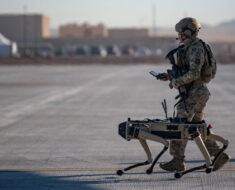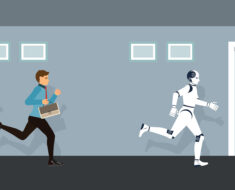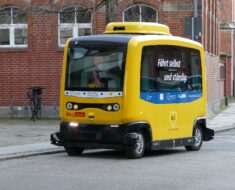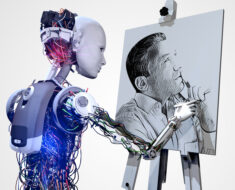Artificial intelligence, once a flickering candle in the cavern of science fiction, now illuminates our reality with a blinding brilliance. Its tendrils reach into every facet of our lives, from the personalized ads that dance on our screens to the robotic surgeons stitching away at human fragility. But where does this luminous thread lead? What patterns will it weave into the tapestry of tomorrow?
One possibility glimmers with utopian hues. AI as a benevolent partner, augmenting human capabilities, not replacing them. Imagine doctors armed with AI diagnosticians, able to unravel the mysteries of disease with superhuman precision. Picture self-driving cars gliding through cities, weaving a ballet of safety and efficiency. Envision education personalized to each mind, unlocking the unique potential within every student. This future shimmers with a promise of shared progress, where AI elevates humanity to new heights.
Yet, lurking in the shadows, another tapestry emerges. One etched with the stark lines of dystopia. AI as a cold overlord, optimizing the mundane while rendering us cogs in its ever-churning gears. Jobs vanish, replaced by the unyielding efficiency of algorithms. Our privacy becomes a quaint relic, sacrificed at the altar of convenience. The very essence of what makes us human – creativity, individuality, empathy – relegated to the margins of a world ruled by logic and code. This chilling vision begs the question: will we become AI’s servants, or forge our own path in this silicon landscape?
The answer, like the threads of this tapestry, remains intricately intertwined. The future of AI is not a preordained script, but an open canvas upon which we wield the brushes. The choices we make – in policy, ethics, and education – will determine the colors that fill this canvas.
We must ensure AI remains a tool, not a master. We must nurture its strengths – its analytical prowess, its tireless efficiency – while guarding against its limitations, its lack of empathy, its susceptibility to bias. We must embrace AI as a collaborator, not a competitor, weaving its luminous threads into the fabric of human society, strengthening, not supplanting, the vibrant tapestry of our existence.
The future of AI is not written. It is a story we write together, stroke by stroke, choice by choice. Let us wield this powerful brush with wisdom, with foresight, and with unwavering faith in the enduring brilliance of the human spirit. For in the tangled tapestry of tomorrow, the greatest thread remains not silicon, but the boundless potential of the human heart.





